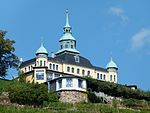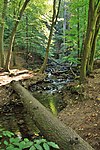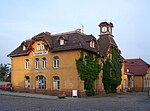Dresden-Stetzsch station
Pages with no open date in Infobox stationRailway stations in Dresden
Dresden-Stetzsch station is a railway station in the Stetzsch district in the capital city of Dresden, Saxony, Germany.
Excerpt from the Wikipedia article Dresden-Stetzsch station (License: CC BY-SA 3.0, Authors).Dresden-Stetzsch station
Seegärten, Dresden Stetzsch (Cotta)
Geographical coordinates (GPS) Address Nearby Places Show on map
Geographical coordinates (GPS)
| Latitude | Longitude |
|---|---|
| N 51.080716 ° | E 13.651065 ° |
Address
Dresden-Stetzsch, Bahnsteig 2
Seegärten
01157 Dresden, Stetzsch (Cotta)
Saxony, Germany
Open on Google Maps










